Last Updated on June 30, 2025 by Julian Espinosa
Are you spending countless hours each week on repetitive household tasks when you could be enjoying your retirement years? The solution might be sitting right at your fingertips – the incredible world of home robotics.
Today’s robotic helpers have evolved far beyond the simple vacuum cleaners of the past. Recent innovations include the Autonomous Domestic Ambidextrous Manipulator (ADAM), an advanced care robot that can assist people with basic daily functions, while the robotic vacuum market alone is expected to reach $4.98 billion in 2025, driven by smart home technology advances and growing consumer preference for convenience.
These remarkable devices aren’t just about cleaning anymore. Modern robots can help with cooking, provide companionship, monitor your home’s security, and even assist with health management. Recent research from Japan, Ireland, and Finland shows that user-centric approaches are making home-care robots more acceptable and beneficial for both caregivers and recipients.
In this comprehensive guide, we’ll explore how today’s robotic assistants can transform your daily routine, help you select the perfect robot for your specific needs, and show you how these intelligent machines integrate seamlessly with your existing smart home setup. You’ll discover practical tips for choosing between user-friendly models and advanced features, understand important privacy considerations, and learn why now might be the perfect time to welcome a robotic helper into your home.
Ready to discover how technology can give you more time for the things that truly matter? Let’s explore the exciting possibilities together.
Embracing the Robotic Revolution for Simplified Living
The concept of robots in our homes used to be confined to the realm of science fiction. The robotic revolution, once a mere concept, has now become a tangible reality. This article will explore the evolution of robotics, from its inception to its current widespread integration into our everyday routines.
In this guide, we’ll delve into the benefits of robot-assisted living, offer guidance on selecting the right robot for your home, discuss the integration of robots with smart home systems, and address the important aspects of data security and privacy.
Prefer to listen rather than read?
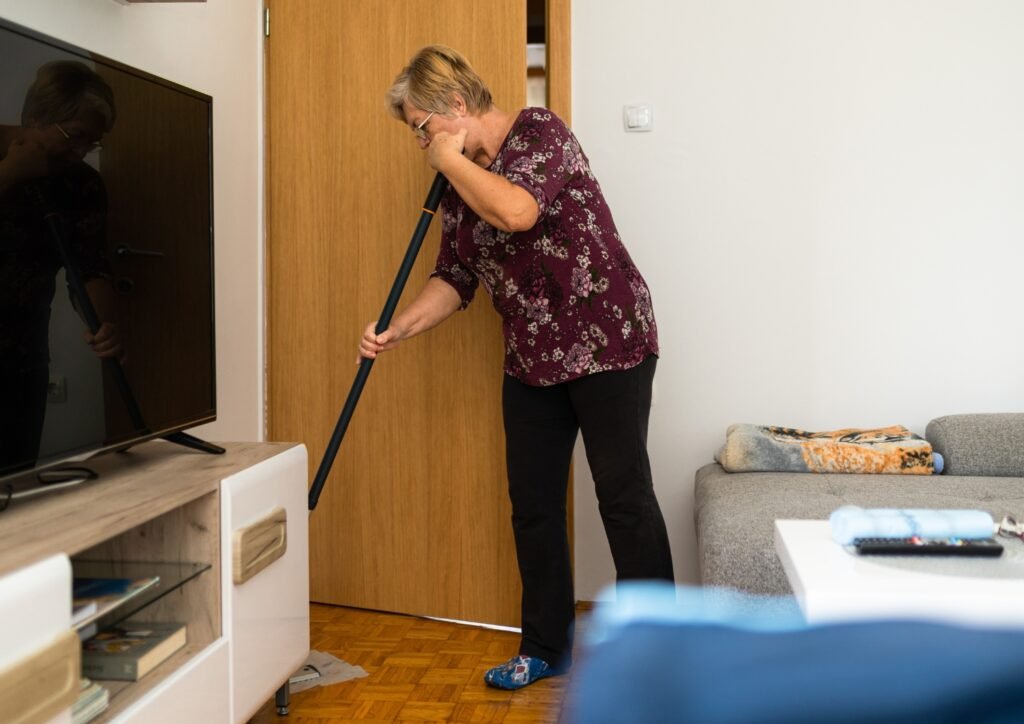
The robotic revolution has been steadily advancing in recent years, bringing with it a multitude of technological advancements that have the potential to simplify our daily lives. From vacuuming and mopping to cooking and laundry, these intelligent machines are equipped to handle a variety of tasks, freeing up valuable time for you to focus on more meaningful activities.
Improve the efficiency of your daily tasks and enrich your lifestyle by incorporating these state-of-the-art tools into your home. Take a moment to unwind as we introduce you to the innovative world of robotics and show you how it can revolutionize your everyday routine.
Exploring the Development of Robotics in Everyday Home Use
Remember when the idea of a robot in your home seemed impossible? Those days are long gone. An estimated 69.9 million U.S. households actively used smart home technology by 2024, more than half of all households, representing a 10% annual increase. These aren’t your grandmother’s appliances; they’re sophisticated AI-powered assistants that learn, adapt, and anticipate your needs.
The Early Stages of Domestic Robotics
The journey started with basic robotic vacuum cleaners that could navigate around furniture and return to their charging stations. While these early pioneers were impressive for their time, they were essentially programmed machines following predetermined paths. They showed us a glimpse of what was possible but barely scratched the surface of robotic potential.
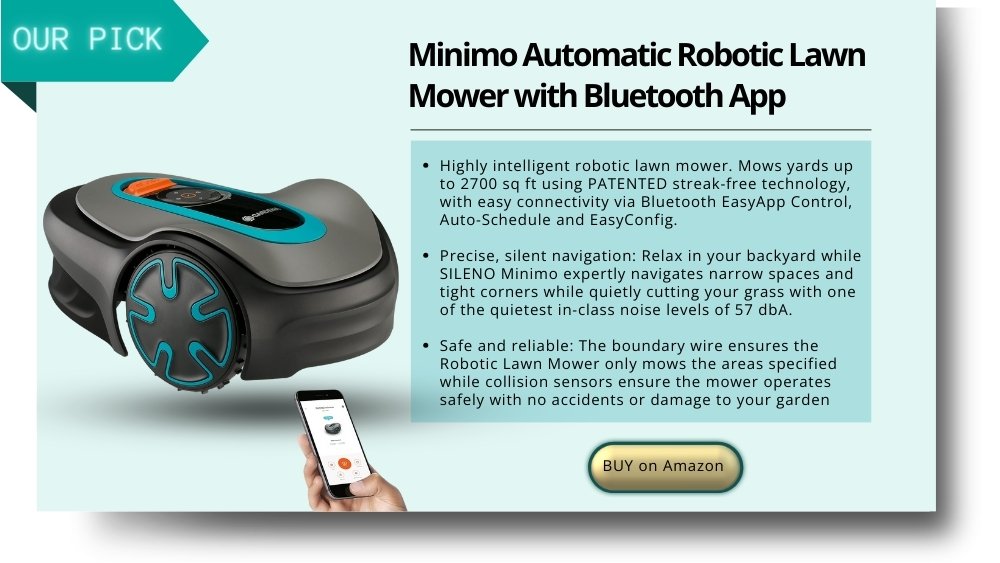
Today’s Intelligent Revolution
Modern home robots represent a quantum leap forward. In August 2024, 1X introduced NEO Beta, a groundbreaking bipedal humanoid robot designed specifically for home use. It combines advanced robotics with sleek design to enhance everyday life with versatile capabilities. These aren’t just cleaning tools; they’re becoming integral family members.
Today’s robots can:
- Assist with cooking, cleaning, and household management
- Learn your daily routines and adapt accordingly
- Recognize your voice and respond to natural language commands
- Integrate with your smart home ecosystem
- Provide companionship and emotional support
- Monitor your health and safety
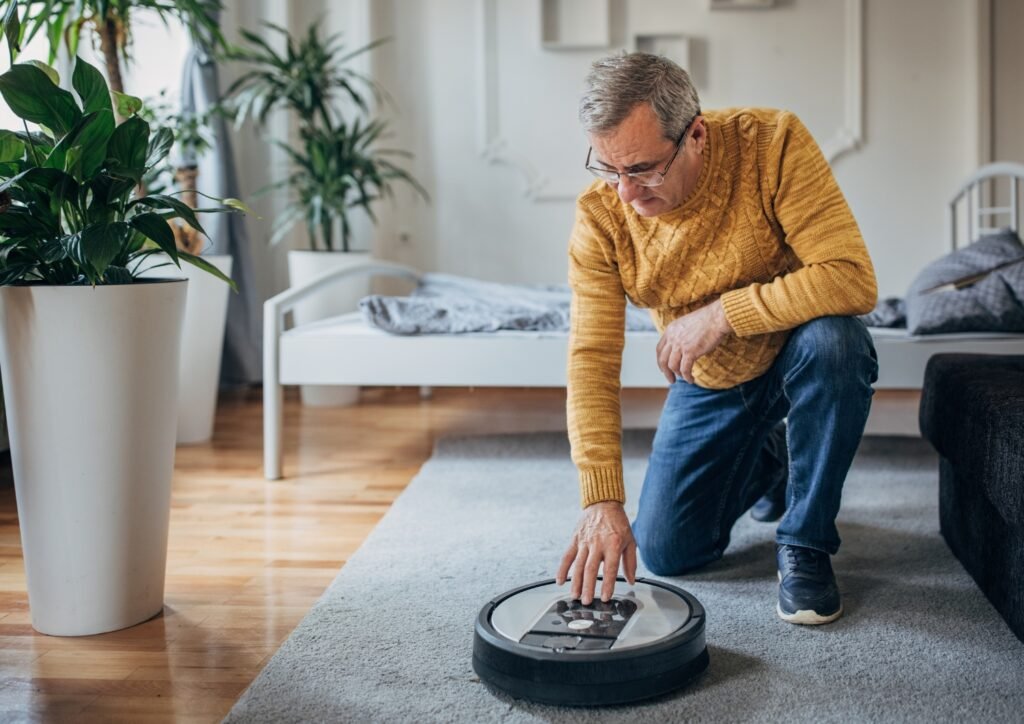
Impact on Society and Perception Shift
The introduction of these robots also initiated a shift in societal perceptions. Initially viewed with skepticism and novelty, these devices gradually began to gain acceptance as valuable household tools. They demonstrated that robotic technology could be harnessed to enhance daily living, paving the way for further advancements and wider acceptance of domestic robotics.
Advancements in AI and Robotics The Integration of Artificial Intelligence
The field of domestic robotics underwent a transformative change with the integration of Artificial Intelligence (AI). This leap forward enabled robots to move beyond pre-programmed tasks and begin ‘learning’ from their environments.
AI integration meant that these machines could adapt to new situations, recognize patterns, and even make decisions based on data analysis, vastly expanding their capabilities.
Evolving From Single-Task Machines to Multifaceted Assistants
With AI, domestic robots evolved from being single-task machines to multifaceted assistants. They started to offer a range of functionalities, from managing schedules to providing reminders for important tasks.
This evolution was significant not only in terms of technological advancement but also in the way it changed the interaction between humans and robots. The interaction became more interactive and personalized, with robots capable of recognizing voices, responding to commands, and even exhibiting basic forms of ‘understanding.’

A Leap Towards Adaptive and Predictive Functionality
The most advanced robots in this robotic revolution began to exhibit adaptive and predictive functionalities. They could learn from the habits and preferences of their users, adjusting their operations accordingly.
For instance, it could learn to clean more frequently in areas of high foot traffic or adjust the temperature based on the time of day and occupancy patterns. This level of personalization marked a significant step towards creating a more intuitive and responsive home environment.
Companionship and Social Connection
Perhaps surprisingly, many people develop meaningful relationships with their robotic assistants. Examples include the therapeutic robot seal Paro and the assistance robot dog Xiaoxi, both of which demonstrate how emotionally effective relationships between humans and machines can develop. These companions can engage in basic conversations, provide reminders for important tasks, and offer a comforting presence, especially valuable for those living alone.
Managing Home Security and Providing Companionship
The robotic revolution plays diverse roles, including managing home security systems and providing companionship, especially to older adults. Security robots can monitor home environments, detect unusual activities, and even alert authorities in case of emergencies.
Health and Safety Monitoring
Modern home robots often include health monitoring capabilities. They can remind you to take medications, detect falls or unusual activity patterns, and even alert family members or emergency services if needed. This provides peace of mind for both you and your loved ones.

Companion robots, on the other hand, are designed to offer social interaction, which can be particularly beneficial for seniors or those living alone. They can engage in simple conversations, play games, and provide reminders for medication or appointments.
Redefining Home Living
The integration of robots into the family unit is redefining the concept of robotic revolution in home living. They are not just assisting in tasks but also contributing to the emotional and social dynamics of the household. For many, these robots have become essential components of their daily lives, offering assistance, companionship, and even a sense of security.
The evolution of domestic robots into family members reflects a broader trend of technology becoming deeply intertwined with personal life, reshaping the way we live, interact, and care for one another in our homes.
Advantages of Robot-Assisted Living: Time Savings and Efficiency
One of the most significant benefits of robot-assisted living is the amount of time it saves. It efficiently handles tasks like cleaning, cooking, and even gardening, freeing up hours for homeowners to focus on more important aspects of their lives.
Enhanced Lifestyle
Beyond efficiency, the robotic revolution contributes to an enhanced lifestyle. They provide assistance that is particularly beneficial for individuals with mobility issues or other disabilities, ensuring a level of independence and quality of life that might otherwise be difficult to maintain.
The Health and Environmental Impact
Robot-assisted living also extends to health and environmental benefits. From robots that help in monitoring health parameters to those that assist in managing energy usage efficiently, their impact is diverse and far-reaching.
Selecting the Right Robot for Your Home
Selecting the right robot for your home is akin to choosing a new member of your household. This decision requires a careful evaluation of your needs, an understanding of your technological preferences, and a realistic assessment of your budget. Let’s explore these aspects in greater detail to ensure you make an informed choice that enriches your home life.
Understanding Your Needs: Identifying Primary Requirements
Before selecting a robot, take time to consider what tasks would make the biggest difference in your daily life. Are you primarily looking for help with:
- Cleaning and Maintenance: Robotic vacuums and mops can handle floor care automatically, with some models capable of emptying their own dustbins and refilling their water tanks.
- Kitchen Assistance: From simple stirring to complex meal preparation, cooking robots are becoming increasingly sophisticated and user-friendly.
- Security and Peace of Mind: Security robots can monitor your home, recognize familiar faces, and provide real-time alerts about unusual activity.
- Companionship and Social Interaction: Social robots offer conversation, games, and emotional support, particularly valuable for those who spend significant time alone.
Balancing Simplicity with Capability
You don’t need to choose between ease of use and advanced features. Many modern robots offer intuitive interfaces while providing sophisticated capabilities behind the scenes. Look for models that offer:
- Simple setup processes with clear, step-by-step instructions
- Voice control integration with popular assistants like Alexa or Google
- Smartphone apps with user-friendly interfaces
- Automatic updates that add new features over time
- Responsive customer support and extensive online resources
Integration with Your Existing Technology
If you already have smart home devices, choose robots that can communicate with your existing system. This creates a seamless, coordinated home environment where all your devices work together harmoniously.
Budget Considerations and Long-Term Value
While initial costs vary significantly, consider the long-term value. A more expensive robot that saves you hours each week and operates reliably for years may prove more economical than cheaper alternatives that require frequent replacement or professional cleaning services.
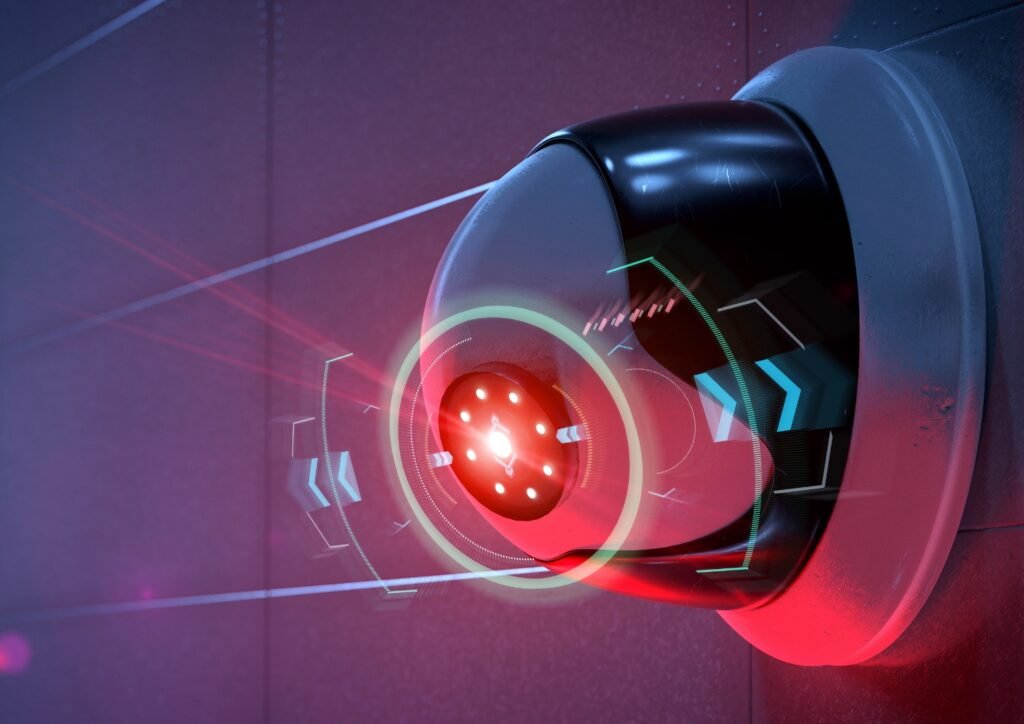
Task Complexity and Frequency
Consider how complex the tasks are and how often you need them done. A simple robot might suffice for basic cleaning, but if you’re looking for something to assist with daily cooking, a more sophisticated model might be necessary.
Technological Preferences
When it comes to the robotic revolution and integrating it into our homes, one size does not fit all. Your personal technological preferences play a significant role in selecting the right one for your household. This involves balancing between user-friendliness and advanced features, ensuring compatibility with existing technology, and considering the learning curve and available support.
Let’s delve deeper into these aspects to help you make an informed decision.
User-Friendliness vs. Advanced Features
For many, the appeal of the robotic revolution lies in their simplicity and ease of use. User-friendly models are designed to be straightforward, requiring minimal setup and maintenance. This simplicity is particularly appealing to those who may not be tech-savvy or those who prefer a ‘plug-and-play’ approach. These robots usually perform specific tasks efficiently without the need for constant adjustments or updates.
Embracing High-Tech Capabilities
On the other end of the spectrum are high-tech robots equipped with the latest advancements in robotics and AI. These models offer a range of customizable settings and advanced features like voice recognition, learning algorithms, and the ability to integrate with various smart devices.
They cater to users who are comfortable with technology and eager to explore and leverage the full potential of robotic assistance. However, this sophistication often comes with a steeper learning curve.
Compatibility with Existing Technology
In today’s technologically advanced era, the integration of domestic robots into our daily lives necessitates a harmonious relationship with existing digital ecosystems. For individuals who have embraced smart home technology, choosing a domestic robot that can effortlessly integrate into this system is paramount.
Such compatibility ensures that the robot can effectively communicate and collaborate with other smart devices within the home. This interconnectedness not only enhances the functionality and efficiency of the robot but also elevates the overall smart home experience.
Domestic robots are essential for a smart home, as they work alongside other devices to simplify tasks and enhance home management. This collaboration creates a more intelligent living space, maximizing the advantages of home automation for a cohesive and connected home.
Future-Proofing Your Choice
Moreover, considering future technological advancements is important. Opting for a robot with the capability to receive updates and adapt to new technologies can be a wise long-term investment. This foresight ensures that your robot remains relevant and functional as new technologies emerge.
Learning Curve and Support: Navigating the Learning Process
Every new technology comes with a learning curve, and the robotic revolution is no exception. High-end models with multiple features might require more time and effort to understand and use effectively. It’s important to assess whether you have the time and inclination to invest in learning these complexities.
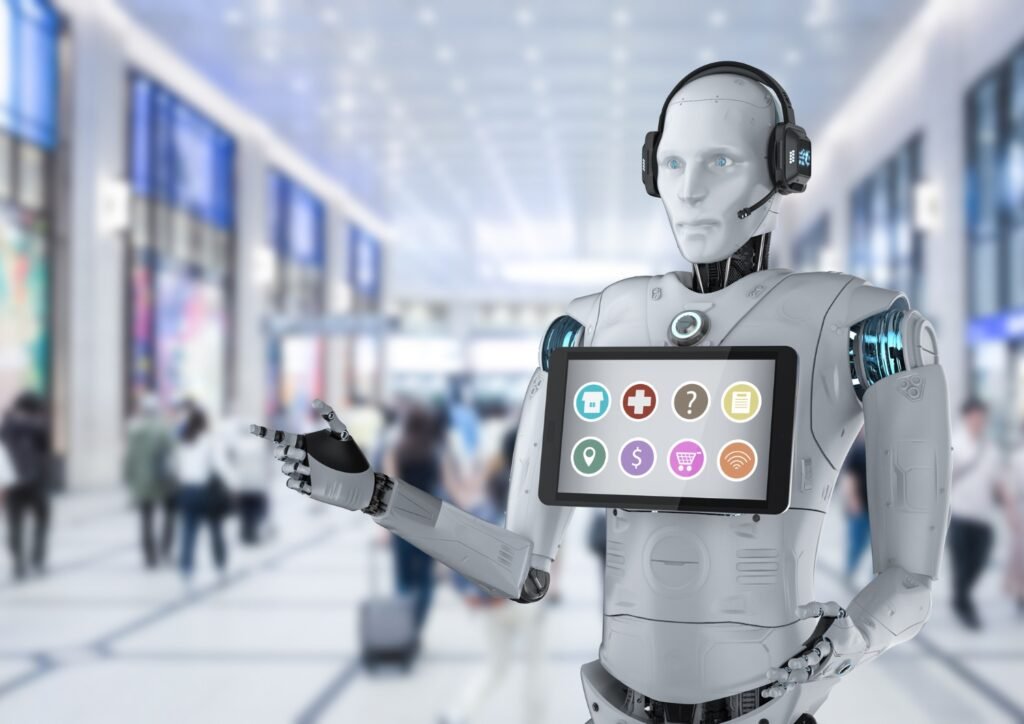
Access to Help and Community Insight
Another critical factor is the availability of customer support and resources. A robust customer service framework, including accessible technical support, user manuals, and online tutorials, can significantly ease the learning process. Additionally, active community forums can be invaluable, offering real-user insights, tips, and troubleshooting advice.
Continuous Learning and Adaptation
Lastly, consider robots that learn and adapt to your preferences and routines over time. These models use AI to adjust their operations based on your interactions and feedback, gradually reducing the effort required on your part.
Budget Considerations: Price Range and Value
In the robotic revolution, robots can vary greatly in price. Basic models might be affordable, but advanced robots with multiple functionalities can be quite expensive. It’s crucial to find a balance between the cost and the value the robot brings to your home.
Long-Term Costs
Beyond the initial purchase price, consider the long-term costs of owning one. This includes maintenance, repairs, and potential upgrades. Some robots might need parts replaced regularly, which can add to the overall cost.
Investment vs. Convenience
Finally, weigh the investment against the convenience and benefits the robotic revolution offers. A higher-priced robot might seem expensive initially, but if it significantly improves your quality of life or saves you a considerable amount of time, it could be a worthwhile investment.
Selecting the right robot for your home is a decision that should be made after careful consideration of your specific needs, your comfort with technology, and your budget. By thoroughly evaluating these factors, you can choose a robot that not only meets your immediate requirements but also becomes a valued and integral part of your household.
Smart Home Integration: Creating Your Connected Living Space
The true magic happens when your robotic assistant integrates with your broader smart home ecosystem. Many robot vacuums integrate seamlessly with voice assistants like Amazon Alexa and Google Assistant, allowing you to control them with simple voice commands.
The Internet of Things (IoT) Advantage
When all your devices communicate through IoT connectivity, they can coordinate their activities for maximum efficiency. Your robot vacuum might start cleaning when your smart thermostat detects you’ve left the house, or your security robot could automatically turn on lights and cameras when unusual activity is detected.
Creating Personalized Automation
Modern systems learn your preferences and routines, automatically adjusting their behavior to match your lifestyle. This isn’t just about scheduling; it’s about creating an intelligent home environment that anticipates your needs and responds accordingly.
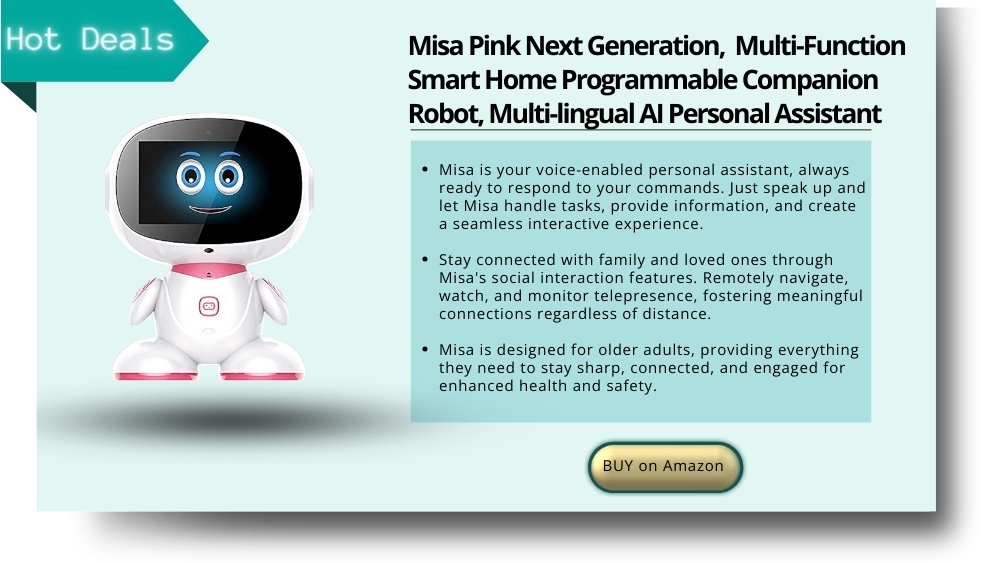
Privacy and Security: Protecting Your Personal Information
With great connectivity comes the responsibility of protecting your personal data. Here are essential steps to maintain your privacy:
Practical Privacy Protection
- Regularly update your robot’s software to ensure the latest security patches
- Use strong, unique passwords for all connected devices
- Review and understand privacy policies before setup
- Limit data sharing to essential functions only
- Consider robots from manufacturers with strong privacy commitments
Manufacturer Responsibility
Choose robots from companies that prioritize user privacy, offer transparent data usage policies, and provide regular security updates. Reputable manufacturers invest heavily in protecting your personal information and maintaining secure systems.
The Future Is Here: Why Now Is the Perfect Time
The robotic segment is expected to register the fastest growth rate of over 11% from 2025 to 2030, indicating that these technologies are becoming mainstream and more affordable. The global robotic vacuum cleaner market alone is projected to grow from $7.76 billion in 2024 to $27.96 billion by 2033, showing incredible momentum and innovation in this space.
This growth means more options, better prices, and continuous improvements in functionality and reliability. The robots available today are more capable, more affordable, and more user-friendly than ever before.
To Wrap It Up
The robotic revolution isn’t coming – it’s here, and it’s ready to transform your daily life in wonderful ways. These intelligent assistants offer more than just convenience; they provide freedom, security, and companionship that can enhance your retirement years significantly.
Whether you’re looking to reclaim time spent on household chores, add an extra layer of security to your home, or simply enjoy the companionship of an intelligent helper, there’s likely a robotic solution that’s perfect for your needs and budget.
Have you considered adding a robotic assistant to your home? What tasks would you most like to delegate to a helpful robot? Share your thoughts and questions in the comments below – we’d love to hear about your experiences or help you navigate this exciting technology!
FAQ
- What should I consider when choosing a robot for my home?
- Start by identifying your primary need – cleaning, companionship, or security. Look for models with intuitive setup, voice control compatibility, and strong customer support. Consider your comfort level with technology and choose accordingly.
- Are user-friendly robots less capable than advanced models?
- Yes, today’s robots include sophisticated sensors to avoid obstacles and detect living beings. However, the initial interactions should always be supervised, and manufacturer guidelines for safe operation around children and pets should be followed.
- How much maintenance do home robots require?
- Most modern robots are designed for minimal maintenance. Robotic vacuums need periodic emptying and filter cleaning, while other robots may require occasional software updates. Many models include self-maintenance features.
- Can robots really help with companionship and social interaction?
- Absolutely. Many users develop meaningful relationships with their robotic companions. While they don’t replace human interaction, they can provide conversation, games, reminders, and a comforting presence, especially valuable for those living alone.
- What happens if my robot malfunctions or breaks down?
- Choose robots from established manufacturers with strong warranty programs and customer support. Many companies offer phone support, online troubleshooting guides, and repair services. Some even provide temporary replacements during repairs.
- How do I protect my privacy with connected robots?
- Use strong passwords, keep software updated, review privacy settings, and choose reputable manufacturers. Limit data sharing to essential functions and regularly review what information your robot collects and shares.
- Are robotic assistants worth the investment for someone on a fixed income?
- Consider the long-term value. Calculate the cost of professional cleaning services or other assistance you might otherwise need. Many users find that robots pay for themselves over time while providing invaluable independence and peace of mind.
- Can I use a robot if I’m not very tech-savvy?
- Yes! Many modern robots are designed with simplicity in mind. Look for models with voice control, simple smartphone apps, and comprehensive customer support. Start with basic functions and gradually explore advanced features as you become comfortable.
Disclaimer
The content provided on MySeniors.World is for informational purposes only and is not intended as either financial or medical advice. Always consult a qualified professional before making any investment or health-related decisions.
Posts may contain affiliate links, meaning we earn a commission – at no additional cost to you, if you click through and make a purchase. Your support helps us continue providing valuable content.
REFERENCES
- Universidad Carlos III & Robotnik. (2024, February 19). Autonomous Domestic Ambidextrous Manipulator (ADAM) elderly care robot development. TechXplore.
- Market Research Report. (2025, January 13). Vacuum Cleaner Statistics and Facts showing robotic segment reaching $4.98 billion in 2025. Market News.
- ScienceDaily. (2025, February 15). User-centric approaches to home-care robot acceptance in Japan, Ireland, and Finland study findings.
- 1X Robotics. (2024, August). NEO Beta bipedal humanoid robot for home use introduction. Household Robots Market Report.
- Vacuum Wars Research. (2025, February 17). Smart home technology adoption reaching 69.9 million U.S. households by 2024.
- Healthcare Technology Report. (2024, December 12). Robotics integration in elderly care for cleaning, cooking, and mobility assistance.
- ERGO Magazine. (2025). Therapeutic robot seal Paro and assistance robot dog Xiaoxi effectiveness in human-machine relationships.
- Grand View Research. (2025). Robotic vacuum cleaner segment growth projection of 11% CAGR from 2025 to 2030.
- Business Research Insights. (2024). Global robotic vacuum cleaner market growth from $7.76 billion in 2024 to $27.96 billion by 2033 projection.



